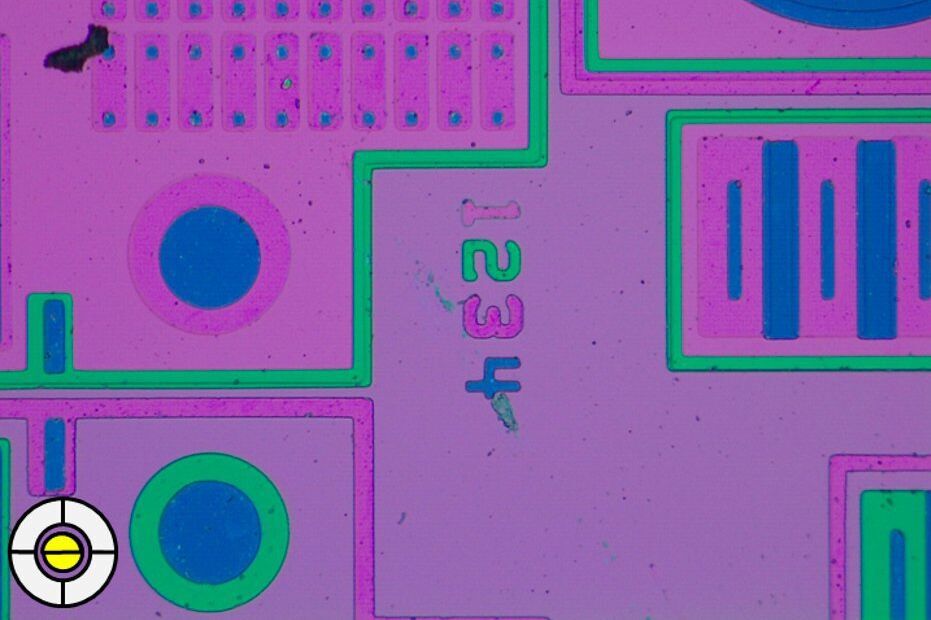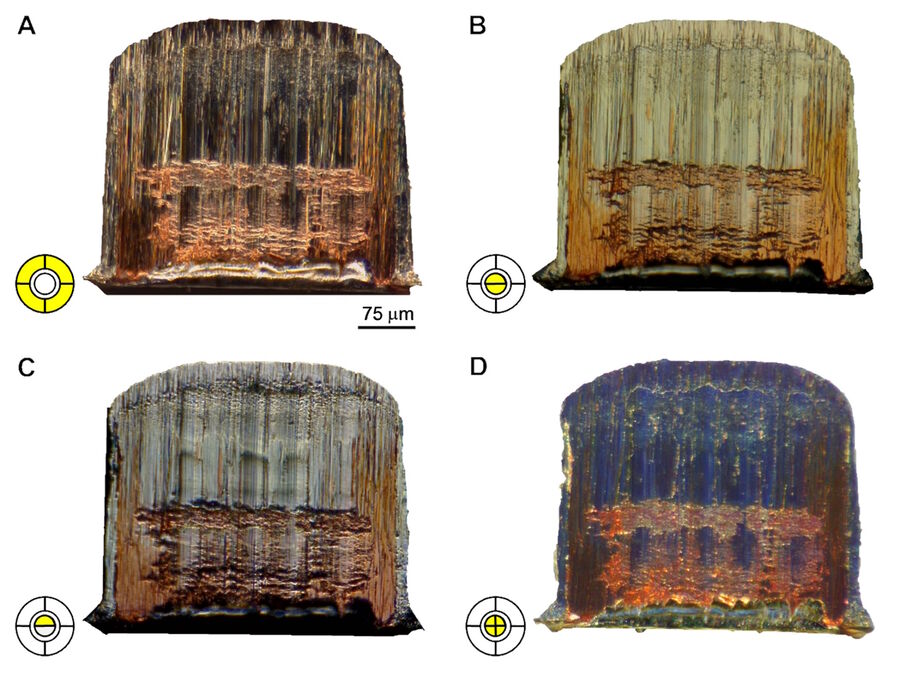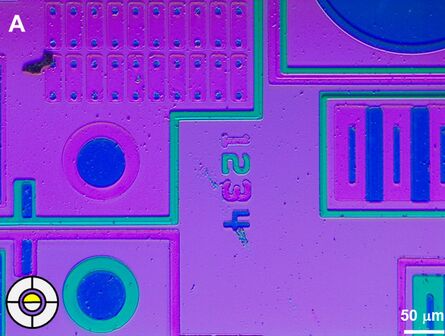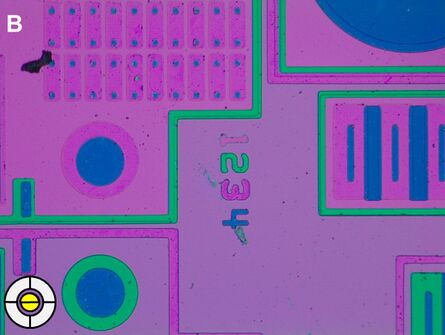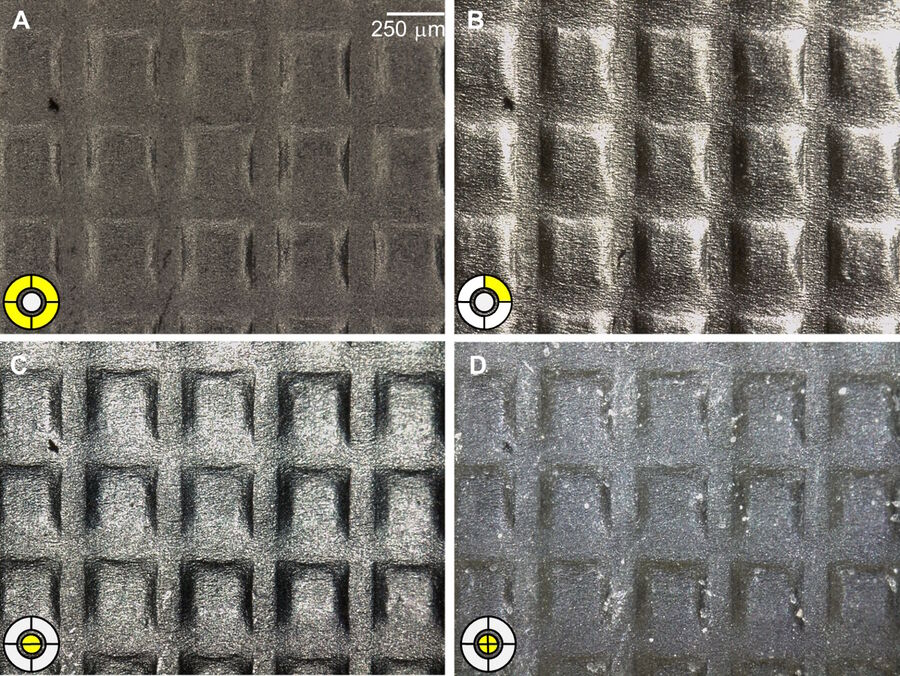Background for digital microscopy applied to inspection, quality control, and failure analysis
Digital microscopes have no eyepieces, but use a digital camera as detector. They are used more and more often for diverse technical applications, such as, fast and easy documentation of parts during manufacturing, assembly, inspection, quality control (QC), and failure analysis (FA).
To better visualize product or product component flaws, often different types of lighting contrast are exploited with optical microscopy [1–4]. Such illumination contrast methods are typically used in a variety of industries, such as, automotive, aerospace, railway, microelectronics and electronics, semiconductors, precision engineering, metallurgy and metallography, glass and ceramics, petroleum, chemicals, pharmaceuticals, and medical devices.
For industrial manufacturing, it is critical to speed up the inspection and QC process. If the feature of interest is detected or seen more easily by enhancing its appearance with different types of illumination and contrast, then less time is needed for inspection and testing. Recent developments in digital microscopy have led to more a practical and efficient way of using illumination contrast methods for inspection and QC purposes.
Examples of digital microscopy imaging with illumination contrast methods
Leadframes
Leadframes are metal structures used inside microelectronic chip packages to connect the wiring from small electrical terminals on the semiconductor surface to the larger scale circuitry on electronic devices and circuit boards. They are used in almost all microelectronic semiconductor packages. For the case shown here (Figure 1) of copper (Cu) leadframes plated with tin (Sn), the amount of Sn smeared over the cross section of the trimmed leadframe is found to be a good indicator of wear for the trimming tool. When the smearing of the Sn reaches a critical level, then normally the tool is replaced. Microscopy illumination contrast methods enable users to see the smearing of the Sn more easily.
Silicon wafers
Silicon wafers are used as substrates for integrated circuits in the production of microelectronic devices. Detecting defects during the production process can be critical in terms of avoiding detrimental effects on the performance of the finalized product or component. Microscopy illumination contrast methods allow defects on the Si wafer surface to be detected more easily and rapidly (Figure 2).
Images of an etched, patterned Si wafer recorded with the Leica DVM6 using different illumination contrast methods (schematic inset): The different contrast in the images emphasizes different features on the Si wafer. Defects on the Si wafer surface are more easily seen with relief contrast and the polarizer open (image A).
Embossed metal coated paper for food packaging
Embossing is a process which produces raised relief patterns, images, and designs in various materials. Here is shown an example of embossed metal coated paper used for food packaging. Microscopy illumination contrast methods are helpful for better visualizing flaws in the embossed metal coated paper or contamination present on its surface (Figure 3).
The images above were acquired with the Leica DVM6 equipped with an integrated ring light and coaxial illumination system based on LED (light-emitting diode) technology (Figure 4).
Conclusion
Digital microscopes, which use cameras as the image detectors rather than eyepieces, are shown to be very practical for inspection during manufacturing and parts assembly, quality control (QC), and failure analysis (FA). Modern digital microscopes utilizing a flexible, integrated LED illumination system which enables the use of multiple contrast methods offer even more advantages in terms of detecting imperfections and defects. One such modern and versatile digital microscope is the Leica DVM6. Examples of how the Leica DVM6 makes inspection, QA, and FA workflows more efficient have been discussed.
References
- Diez D: Metallography – an Introduction: How to Reveal Microstructural Features of Metals and Alloys, Science Lab.
- Christian U, and Jost N: Metallography with Color and Contrast: The Possibilities of Microstructural Contrasting, Science Lab.
- Goeggel D, and Schlaffer G: 3D Visualization of Surface Structures, Vertical Resolution – Small Steps, Big Effect, Science Lab.
- Goeggel D: Factors to Consider When Selecting a Stereo Microscope, Science Lab.
